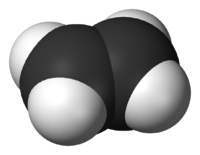
Photo from wikipedia
The performance of low-temperature carbon-based perovskite solar cells (C-PSCs) with high commercial potential was hampered by the inferior interface between the absorber and carbon electrode. In this work, poly[bis(4-phenyl)(2,4,6-trimethylphenyl)amine] (PTAA)… Click to show full abstract
The performance of low-temperature carbon-based perovskite solar cells (C-PSCs) with high commercial potential was hampered by the inferior interface between the absorber and carbon electrode. In this work, poly[bis(4-phenyl)(2,4,6-trimethylphenyl)amine] (PTAA) was dissolved in an antisolvent for spin-coating perovskite (CH3NH3PbI3, MAPI) films, which was applied to modify both the MAPI films and the interface between the MAPI layer and carbon electrode by gradient engineering. Finally, the C-PSCs based on MAPI-PTAA gradient bulk heterojunction films achieved a power conversion efficiency of 13.0% with an active area of 1 cm2, 26% higher than that of pristine MAPI cells, because of the passivated trap states, accelerated hole extraction, and improved crystalline properties in absorber films.
Journal Title: ACS applied materials & interfaces
Year Published: 2018
Link to full text (if available)
Share on Social Media: Sign Up to like & get
recommendations!